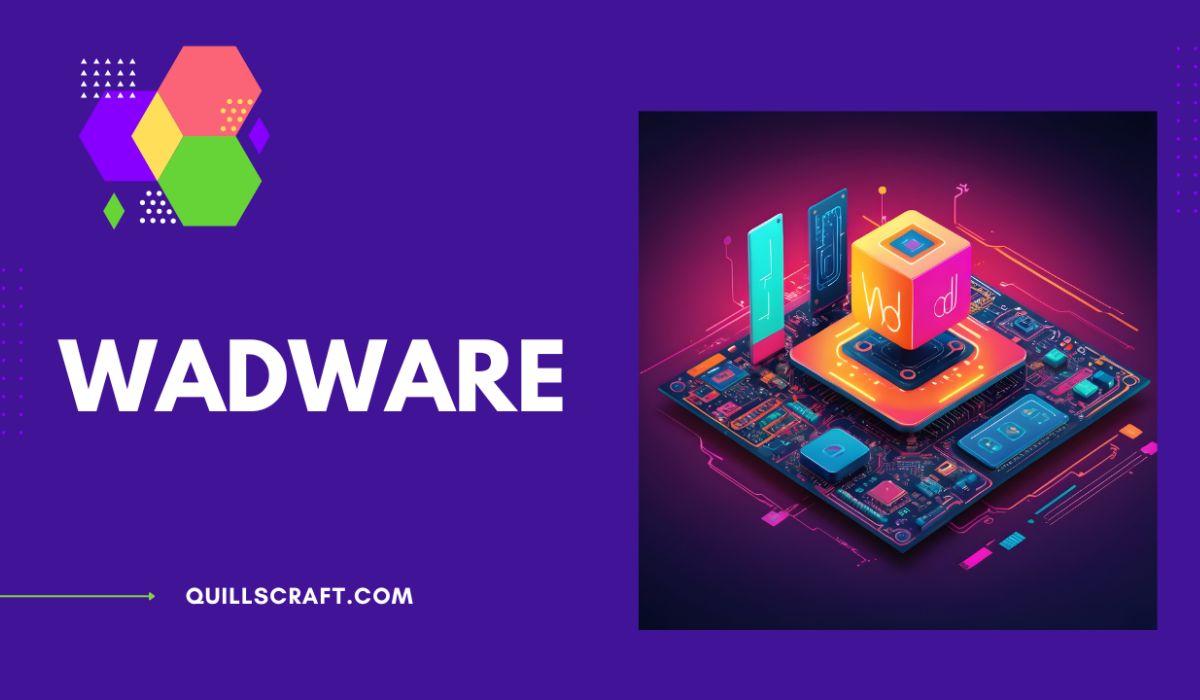Business
Everything You Need to Know About The How Much do Bearded Dragons Cost

Introduction to How Much do Bearded Dragons Cost:
The How Much do Bearded Dragons Cost are fascinating reptiles that make wonderful pets for reptile enthusiasts of all ages. But before diving into the world of bearded dragon ownership, it’s essential to understand the costs involved. In this comprehensive guide, we’ll explore everything you need to know about the expenses associated with owning a bearded dragon.
1. Understanding the Initial Cost:
When considering the cost of a bearded dragon, it’s essential to factor in both the initial setup expenses and the ongoing costs of care. Here’s a breakdown of the initial costs:
- Purchase Price: The price of a bearded dragon can vary depending on factors such as age, morph, and breeder reputation. On average, you can expect to pay anywhere from $50 to $500 for a bearded dragon.
- Enclosure: Bearded dragons require a spacious enclosure to thrive. The cost of a suitable enclosure can range from $50 for a basic setup to several hundred dollars for a larger, more elaborate habitat.
- Heating and Lighting: Bearded dragons are ectothermic, meaning they rely on external heat sources to regulate their body temperature. You’ll need a heat lamp, UVB light, and possibly a ceramic heat emitter, which can cost around $50 to $100.
- Substrate and Decor: Substrate for the enclosure floor, as well as decor such as rocks, branches, and hides, are essential for creating a comfortable environment for your bearded dragon. These items can cost anywhere from $20 to $100.
2. Ongoing Costs of Care:
In addition to the initial setup expenses, there are ongoing costs associated with caring for a bearded dragon. Here’s what to expect:
- Food: Bearded dragons have specific dietary requirements, including live insects, leafy greens, and occasional fruits. The cost of food will vary depending on factors such as the size of your dragon and the availability of feeder insects. On average, expect to spend around $20 to $50 per month on food.
- Veterinary Care: Regular veterinary check-ups are essential for maintaining your bearded dragon’s health. Additionally, unexpected medical expenses may arise, such as treatment for parasites or respiratory infections. Budgeting around $100 to $200 per year for veterinary care is recommended.
- Supplements: Bearded dragons require calcium and vitamin supplements to prevent nutritional deficiencies. These supplements typically cost around $10 to $20 per month.
- Electricity: The cost of electricity to power heating and lighting elements in your bearded dragon’s enclosure should also be factored into your budget. While this cost will vary depending on your location and energy rates, it’s typically a small monthly expense.
3. Additional Considerations:
Beyond the basic costs outlined above, there are a few additional factors to consider when budgeting for a bearded dragon:
- Insurance: Some pet owners opt to purchase pet insurance to help cover unexpected veterinary expenses. While this isn’t a necessary expense, it can provide peace of mind knowing that your pet’s medical costs will be covered in the event of illness or injury.
- Travel Expenses: If you plan to travel frequently or go on vacation, you’ll need to budget for pet-sitting or boarding costs for your bearded dragon.
- You may also like: Navigating the Insurtech Marketing Landscape: Challenges and Opportunities
Conclusion:
Owning a bearded dragon can be a rewarding experience, but it’s essential to understand the costs involved upfront. By considering both the initial setup expenses and ongoing costs of care, you can ensure that you’re financially prepared to provide the best possible care for your scaly companion. With proper budgeting and planning, you’ll be well-equipped to enjoy many years of companionship with your bearded dragon.
FAQS
1. How much does a bearded dragon cost?
- The cost of a bearded dragon can vary depending on factors such as age, morph, and breeder reputation. On average, you can expect to pay anywhere from $50 to $500 for a bearded dragon.
2. What is the cost of setting up a bearded dragon enclosure?
- Setting up a bearded dragon enclosure involves expenses such as the enclosure itself, heating and lighting elements, substrate, and decor. The cost can range from $50 for a basic setup to several hundred dollars for a larger, more elaborate habitat.
3. How much does it cost to feed a bearded dragon?
- Bearded dragons have specific dietary requirements, including live insects, leafy greens, and occasional fruits. On average, expect to spend around $20 to $50 per month on food for your bearded dragon.
4. Are there ongoing veterinary costs associated with owning a bearded dragon?
- Yes, regular veterinary check-ups are essential for maintaining your bearded dragon’s health. Additionally, unexpected medical expenses may arise, such as treatment for parasites or respiratory infections. Budgeting around $100 to $200 per year for veterinary care is recommended.
5. What are the monthly expenses of owning a bearded dragon?
- In addition to food and veterinary care, other monthly expenses of owning a bearded dragon include supplements, electricity to power heating and lighting elements, and potentially pet insurance. These expenses can vary but generally range from $30 to $100 per month.
Business
Transforming HR Practices with Wendy Sellers’ Insights

Human resources (HR) have evolved significantly over the years. Gone are the days when HR was simply about payroll and compliance. Today, HR is a strategic partner in business, playing a crucial role in talent management and employee engagement. Wendy Sellers, known as The HR Lady, has been at the forefront of this transformation. Her expertise in HR consulting and management training has helped countless organizations improve their HR practices. In this blog post, we’ll explore key areas such as talent attraction and retention, effective feedback, and elevating employee performance through training and development, all through the lens of Wendy’s insights.
The Importance of Talent Attraction and Retention
Challenges in Attracting and Retaining Top Talent
In today’s competitive job market, attracting and retaining top talent is a significant challenge for organizations. Companies are vying for the best candidates, and the power dynamics have shifted towards the job seekers. Companies must offer more than just competitive salaries; they need to provide a compelling work environment, growth opportunities, and a strong organizational culture. Without these elements, even the most attractive job offers can fall flat.
High turnover rates can be detrimental to businesses, leading to increased recruitment costs, reduced employee morale, and loss of organizational knowledge. Wendy Sellers emphasizes that understanding the needs and motivations of job seekers is key to developing effective talent attraction and retention strategies.
Traditional and Innovative Strategies for Talent Acquisition
Traditional methods of talent acquisition, such as job postings on company websites and recruitment agencies, are still relevant today. However, innovative strategies are increasingly becoming essential. Social media platforms like LinkedIn, Facebook, and Twitter have become powerful tools for reaching potential candidates. Employee referral programs also play a crucial role, as they tap into the networks of existing employees to find suitable candidates.
Wendy advocates for a holistic approach to talent acquisition that includes employer branding, employee value proposition (EVP), and candidate experience. Employer branding involves creating a positive image of the company as a great place to work. The EVP highlights what employees can expect from the company in terms of career growth, work-life balance, and organizational culture. The candidate experience focuses on ensuring that potential hires have a positive interaction with the company throughout the recruitment process.
Retention Strategies to Keep Your Best Talent
Once top talent is acquired, retaining them is the next critical step. Effective retention strategies focus on creating a supportive and engaging work environment. Wendy Sellers suggests implementing programs that promote work-life balance, such as flexible working hours, remote work options, and wellness initiatives. Career development opportunities, such as training programs and mentorship, are also vital in retaining employees who value personal and professional growth.
Regularly recognizing and rewarding employees for their contributions can significantly boost morale and loyalty. This can be done through monetary rewards, public recognition, or opportunities for advancement. Wendy also emphasizes the importance of conducting exit interviews to understand why employees leave and identify areas for improvement.
Effective Feedback A Pillar of Employee Engagement
The Impact of Feedback on Employee Performance
Feedback is an essential component of employee engagement and performance. Constructive feedback helps employees understand their strengths and areas for improvement, enabling them to grow professionally. When delivered effectively, feedback can boost employee morale, increase motivation, and foster a culture of continuous improvement.
Wendy Sellers highlights that feedback should be timely, specific, and actionable. It should focus on behaviors and outcomes rather than personal attributes. This approach ensures that employees perceive feedback as a tool for growth rather than criticism.
Practical Tips for Delivering Effective Feedback
Delivering effective feedback requires careful planning and execution. Here are some practical tips based on Wendy’s insights:
- Be Specific: Vague feedback is unhelpful. Clearly describe the behavior or action that needs to be addressed and its impact on the team or organization.
- Timely Delivery: Don’t wait for annual performance reviews to provide feedback. Timely feedback allows employees to make immediate improvements.
- Balance Positives and Negatives: Start with positive feedback to set a constructive tone, then address areas for improvement. Conclude with encouragement and support.
- Encourage Two-Way Communication: Allow employees to share their perspectives and ask questions. This fosters a collaborative environment and shows that their opinions are valued.
- Follow Up: Provide ongoing support and check in on progress regularly. This demonstrates commitment to the employee’s development.
Creating a Feedback-Rich Culture
Creating a feedback-rich culture involves encouraging open communication, transparency, and continuous learning. Wendy Sellers suggests implementing regular check-ins, peer reviews, and 360-degree feedback mechanisms. These practices ensure that feedback is an integral part of the organizational culture, leading to higher levels of employee engagement and performance.
Training managers on how to deliver effective feedback is also crucial. Provide them with the necessary tools and resources to conduct productive feedback sessions. Encouraging a growth mindset among employees can further enhance the effectiveness of feedback.
Elevating Employee Performance through Training and Development
Identifying Skill Gaps within the Workforce
Identifying skill gaps is the first step towards enhancing employee performance. This involves assessing the current capabilities of the workforce and comparing them with the skills required to achieve organizational goals. Wendy Sellers emphasizes the importance of conducting regular skills assessments and performance evaluations to identify areas for improvement.
Engaging employees in this process is crucial. Encourage them to self-assess and identify their own skill gaps. This promotes a sense of ownership and responsibility for their development. Use the insights gathered from these assessments to design targeted training programs.
Designing and Implementing Effective Training Programs
Designing effective training programs requires a deep understanding of the organization’s needs and the learning preferences of employees. Wendy Sellers suggests using a mix of training methods, such as workshops, e-learning modules, on-the-job training, and mentoring. This ensures that training is accessible and engaging for all employees.
Customized training programs are often more effective than generic ones. Tailor the content to address the specific skill gaps identified and align it with the organization’s goals. Include practical exercises and real-life scenarios to enhance learning and retention.
Implementing training programs successfully involves clear communication, adequate resources, and continuous evaluation. Communicate the objectives and benefits of the training to employees. Provide them with the necessary tools and support to complete the training. Regularly evaluate the effectiveness of the training programs and make improvements as needed.
Encouraging a Culture of Continuous Learning
A culture of continuous learning fosters innovation, adaptability, and resilience. Wendy Sellers advocates for creating an environment where learning is encouraged and celebrated. This can be achieved by offering incentives for completing training programs, providing opportunities for career advancement, and recognizing employees’ efforts to learn and grow.
Encourage employees to take ownership of their learning journeys. Provide them with access to a variety of learning resources, such as online courses, books, and industry conferences. Promote knowledge sharing and collaboration among employees through workshops, discussion forums, and mentoring programs.
Leadership plays a crucial role in promoting continuous learning. Leaders should lead by example, demonstrating a commitment to their own professional development and encouraging their teams to do the same. Regularly communicate the importance of learning and its impact on the organization’s success.
Conclusion
In conclusion, transforming HR practices to focus on talent attraction and retention, effective feedback, and employee performance enhancement is crucial for organizational success. Wendy Sellers, The HR Lady, provides valuable insights and practical strategies to achieve this transformation. By implementing these strategies, organizations can create a supportive and engaging work environment that attracts top talent, fosters employee growth, and drives business success.
Remember, the key to successful HR practices lies in understanding the needs of your employees and creating a culture that supports their growth and development. Apply these insights from Wendy Sellers to transform your HR practices and elevate your organization to new heights.
For more expert advice and personalized guidance, subscribe to The HR Lady’s newsletter and stay updated with the latest trends and best practices in HR. Let’s work together to create a better workplace for everyone.
Frequently Asked Questions
- What are some effective strategies for talent attraction?
- Effective strategies for talent attraction include crafting compelling job descriptions, leveraging social media, building a strong employer brand, and offering competitive compensation.
- How can managers give constructive feedback?
- Managers can give constructive feedback by being specific, balancing positives with negatives, encouraging two-way communication, and following up regularly to support employee development.
- How do you identify skill gaps in the workforce?
- Identifying skill gaps involves conducting regular skills assessments, performance evaluations, and encouraging employees to self-assess. Comparison with organizational goals can also highlight areas for improvement.
- What methods can be used for effective training programs?
- Effective training methods include workshops, e-learning modules, on-the-job training, and mentoring. Customizing the training to address specific skill gaps can also enhance effectiveness.
- Why is a culture of continuous learning important in an organization?
- A culture of continuous learning fosters innovation, adaptability, and resilience. It promotes employee engagement and supports career advancement, leading to overall organizational success.
Business
The Ultimate Guide to Geek Support Services: Your Local Geek Squad Alternative in Edmonton

In the digital age, where technology permeates every aspect of our lives, the importance of reliable tech support cannot be overstated. From the perplexing error message that pops up just as you’re about to hit “save” on a critical document, to the network issues that leave you disconnected from the world, the range and frequency of tech challenges we face are vast. Enter Geek Support, your trusted geek squad alternative in Edmonton, providing A+ customer service and solving over 100,000 tech issues with unparalleled expertise.
Introduction to the Importance of Tech Support in Our Daily Lives
In today’s fast-paced world, our reliance on technology is unmatched. The moment our devices falter, our entire routine can come to a standstill. This underscores the critical need for immediate, effective tech support – a safety net to ensure our digital lives remain uninterrupted.
Overview of Geek Support Services and Their Unique Approach
Geek Support stands out from the crowd with their personalized, local approach to tech support. Unlike some distant call centers, Geek Support offers the opportunity to interact directly with local experts in Edmonton. Every team member is not only highly skilled but also deeply committed to solving your issues and improving your overall tech experience.
Common Tech Issues Faced by Users and How Geek Support Solves Them
From virus removal and data recovery to network setup and maintenance, there’s no problem too big or small for Geek Support. Their local experts have extensive experience tackling common – and uncommon – tech issues, ensuring you get the optimal solution every time.
The Value of Local Tech Support vs. Remote Services
While remote services can be convenient, the value of having local tech support like Geek Support cannot be overstated. Immediate, face-to-face interactions significantly enhance the troubleshooting process, making it faster and more efficient. In the event of hardware issues, having access to local support means quicker repairs, minimizing any disruptions to your daily routine.
Customer Testimonials and A+ Ratings: Building Trust in Geek Support
The proof of Geek Support’s excellence lies in their glowing customer testimonials and consistent A+ ratings. Customers rave about the quick resolutions, the courteous and knowledgeable service, and the peace of mind that comes from knowing expert help is just around the corner.
Tips for DIY Tech Troubleshooting and When to Call in the Geeks
While some minor issues can often be resolved with a bit of DIY troubleshooting, knowing when to call in the experts is crucial. This section provides valuable tips for diagnosing common problems and outlines clear scenarios when it’s time to seek professional help, ensuring you’re not causing more harm than good to your devices.
YOU MAY ALSO LIKE
Poetry Meets Pixels: The Pros and Perplexities of Splashui CAPTCHA?ap=1
Conclusion: Emphasizing the Accessibility and Reliability of Geek Support
In conclusion, Geek Support offers an unparalleled level of service, combining the convenience of local support with the expertise and reliability that modern tech users demand. Whether you’re battling a persistent software glitch or setting up a new home office network, Geek Support is your go-to geek squad alternative in Edmonton.
From tech novices to seasoned veterans, everyone can benefit from the high-quality, friendly service offered by Geek Support. In a world where technology is constantly evolving, having a reliable partner to help navigate the complexities of the digital landscape is invaluable. Geek Support stands ready to solve all your tech challenges, ensuring that your digital life runs as smoothly as possible.
Remember, in the vast sea of tech support options, Geek Support shines as a beacon of excellence, proving that local expertise and personalized service can make all the difference in the fight against frustrating tech issues.
Frequently Asked Questions About Geek Support Services
- What services does Geek Support offer?
- Geek Support offers a wide range of services including virus removal, data recovery, network setup and maintenance, among other tech support needs.
- How does Geek Support differ from other tech support services?
- Unlike remote services, Geek Support provides local, face-to-face tech support in Edmonton, offering a more personalized and efficient service.
- Can Geek Support help with both hardware and software issues?
- Yes, Geek Support’s local experts are equipped to handle both hardware and software issues, ensuring comprehensive tech support.
- Is Geek Support available for emergency tech issues?
- Absolutely, Geek Support is available for emergency tech issues, emphasizing their commitment to providing reliable and immediate assistance.
- How can I trust the quality of Geek Support’s services?
- Geek Support has garnered glowing customer testimonials and consistent A+ ratings, highlighting their quality service and reliability.
Business
Understanding Wadware: Your Comprehensive Guide

Introduction to Wadware:
In the ever-evolving digital landscape, understanding the ins and outs of cybersecurity is crucial. One term that’s been gaining attention in recent years is “wadware.” But what exactly is wadware, and why should you be aware of it? In this comprehensive guide, we’ll delve into the world of wadware, covering everything from its definition to its impact and how you can protect yourself against it.
What is Wadware?
Wadware, sometimes spelled as “adware,” is a type of malicious software designed to display advertisements on your computer, often in the form of pop-up ads or banners. Unlike legitimate advertising software, wadware typically operates without the user’s consent and can be challenging to remove. It often comes bundled with other software or downloads from the internet, making it easy for unsuspecting users to inadvertently install it on their systems.
Key Characteristics of Wadware:
- Advertisement Display: Wadware primarily functions by displaying unwanted advertisements on your computer screen, disrupting your browsing experience and potentially exposing you to malicious content.
- Invasive Nature: Wadware can be highly invasive, tracking your online activities and collecting personal information without your consent. This information is often used to target you with more tailored advertisements.
- Resource Consumption: In addition to bombarding you with ads, wadware can also consume system resources, slowing down your computer and affecting its performance.
- Persistence: Wadware is notoriously difficult to remove, as it may hide deep within your system files and reinstall itself even after you attempt to delete it.
The Risks of Wadware
While wadware may seem like a mere nuisance, it poses significant risks to both individuals and organizations. Here are some of the potential dangers associated with wadware:
1. Security Vulnerabilities:
Wadware often serves as a gateway for other forms of malware to infiltrate your system. By exploiting security vulnerabilities, wadware can pave the way for more malicious attacks, such as ransomware or spyware.
2. Privacy Concerns:
The intrusive nature of wadware means that it can compromise your privacy by monitoring your online activities and collecting sensitive information, such as login credentials or financial data. This information can then be used for identity theft or other fraudulent purposes.
3. Financial Implications:
In addition to the direct impact on your privacy and security, wadware can also have financial implications. It may trick you into clicking on fraudulent ads or purchasing fake products, leading to financial loss.
4. Reputation Damage:
For businesses, falling victim to wadware can result in damage to their reputation and loss of customer trust. If customer data is compromised due to wadware, it can have long-lasting consequences for the company’s credibility and brand image.
Protecting Yourself Against Wadware
Now that you understand the risks associated with wadware, it’s essential to take proactive steps to protect yourself and your devices. Here are some strategies to safeguard against wadware:
1. Use Trusted Security Software:
Invest in reputable antivirus and antimalware software and keep it updated regularly. These programs can help detect and remove wadware and other forms of malware before they cause harm.
2. Be Cautious When Downloading Software:
Avoid downloading software from unfamiliar or untrustworthy sources, as these may bundle wadware with their installations. Stick to reputable download platforms and always read user reviews before downloading any software.
3. Enable Pop-Up Blockers:
Most web browsers offer built-in pop-up blockers that can help prevent wadware and other intrusive ads from appearing on your screen. Make sure to enable this feature in your browser settings for an added layer of protection.
4. Update Your Operating System and Software:
Keep your operating system and all installed software up to date with the latest security patches and updates. These updates often contain fixes for known vulnerabilities that wadware and other malware may exploit.
5. Educate Yourself and Others:
Stay informed about the latest cybersecurity threats, including wadware, and educate yourself and others about best practices for staying safe online. By raising awareness and practicing good cybersecurity hygiene, you can help mitigate the risks associated with wadware.
You may also like: Unveiling the Magic of AIYIFAN: Your Ultimate Guide
Conclusion
In today’s digital age, wadware poses a significant threat to individuals and organizations alike. By understanding what wadware is, the risks it poses, and how to protect yourself against it, you can minimize the likelihood of falling victim to this malicious software. Remember to stay vigilant, use trusted security software, and practice good cybersecurity habits to keep yourself and your devices safe from wadware and other cyber threats.
FAQS
1. What is wadware?
Answer: Wadware, sometimes spelled as “adware,” is a type of malicious software designed to display advertisements on your computer, often in the form of pop-up ads or banners. Unlike legitimate advertising software, wadware typically operates without the user’s consent and can be challenging to remove. It often comes bundled with other software or downloads from the internet, making it easy for unsuspecting users to inadvertently install it on their systems.
2. How does wadware affect my computer?
Answer: Wadware can have several negative effects on your computer. Firstly, it displays unwanted advertisements, disrupting your browsing experience. Additionally, it may track your online activities and collect personal information without your consent, compromising your privacy. Wadware can also consume system resources, slowing down your computer and affecting its performance.
3. Can wadware pose security risks?
Answer: Yes, wadware can pose significant security risks. It often serves as a gateway for other forms of malware to infiltrate your system by exploiting security vulnerabilities. This can lead to more malicious attacks, such as ransomware or spyware. Additionally, wadware may collect sensitive information from your computer, putting your data at risk of theft or misuse.
4. How can I protect myself against wadware?
Answer: To protect yourself against wadware, it’s essential to take proactive steps. Firstly, use trusted security software and keep it updated regularly to detect and remove wadware and other forms of malware. Be cautious when downloading software from unfamiliar sources and enable pop-up blockers in your web browser. Keep your operating system and software up to date with the latest security patches, and educate yourself and others about best practices for staying safe online.
5. Is it possible to remove wadware from my computer?
Answer: While wadware can be challenging to remove, it is possible with the right tools and techniques. Reputable antivirus and antimalware software can help detect and remove wadware from your system. Additionally, you can manually remove wadware by uninstalling any suspicious programs from your computer and resetting your web browser settings to their default configuration. If you’re having difficulty removing wadware, consider seeking assistance from a professional cybersecurity expert.
-

 Tech11 months ago
Tech11 months agoWhat is Retroya? A Comprehensive Explanation
-

 Blog9 months ago
Blog9 months agoUnlocking the Power of Kingymab: Your Ultimate Guide
-

 Fashion11 months ago
Fashion11 months agoEsfeet Unveiled: Decoding the Intricacies
-

 Tech11 months ago
Tech11 months agoCoomersu: An In-Depth Exploration of the Digital Trend
-

 Blog11 months ago
Blog11 months agoWhat is Chancerne: Unraveling the Mysteries
-

 Fashion11 months ago
Fashion11 months agoTop 10 Benefits of Using Esfeet: An Ultimate Guide
-

 Tech10 months ago
Tech10 months agoUnveiling the Power of Pikruos: Innovative Solutions for All
-

 News10 months ago
News10 months agoTop 5 anonposted.com Alternatives & Competitors: Exploring Privacy-Focused Platforms





